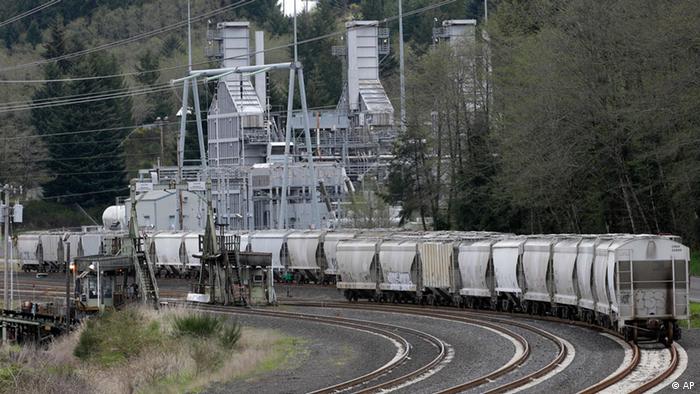Welcome
....to JusticeGhana Group

JusticeGhana is a Non-Governmental [and-not-for- profit] Organization (NGO) with a strong belief in Justice, Security and Progress....” More Details
America's battle over coal and clean air
- Details
- Parent Category: Africa and The World
- Category: DateLines
- Created on Wednesday, 01 July 2015 00:00
- Hits: 9142
 America's battle over coal and clean air
America's battle over coal and clean air
The US Supreme Court this week ruled against a regulation limiting mercury emissions. The environmental and coal lobbies are gearing up for a battle over the White House's Clean Power Plan, as Spencer Kimball reports.
Old king coal has seen better days.
Already under pressure from a boom in cheap natural gas, the industry has been pinched by the Obama administration's push for stricter clean air standards. According to the Sierra Club, 195 coal-fired power plants are scheduled for retirement. That leaves 328 on America's power grid.
A number of those plants have shut down due to Environmental Protection Agency (EPA) regulations. In particular, a rule that aims to drastically reduce the 50 tons of mercury that coal-fired power plants emit into America's air every year.
Some of that mercury ultimately settles in bodies of water, contaminating fish that in turn are consumed by people. All 50 states have bodies of water with advisories warning people against fishing due to mercury contamination. A brain toxin, mercury is particularly dangerous for fetuses and breast-feeding children who can be exposed to the heavy metal through the mother's body.
According to the US Supreme Court, the goal of reducing these health hazards must be weighed against what it costs for the industry to comply with the regulation. Compliance often requires shelling out $250 million (224 million euros) for clean-up equipment. That's a death knell for many coal-fired plants older than 40.
Fait accompli
Five justices ruled that the EPA didn't take those costs into consideration, sending the agency back to the drawing board. It's a victory for the embattled coal industry, but one without much practical effect for the time being.
Seventy percent of America's coal-fired power plants have already complied with the regulation, which gave the other 30 percent another year for implementation. According to John Walke of the National Resources Defense Council, there's little chance that the rule will be completely rolled back.
“If there were cynical plants that turned off these controls, funded by the public, in order to save themselves operating expenses at the expense of public health in those communities, you could be sure there would be a lot of negative press and an outcry from politicians and the public over that type of maneuver,” Walke, an attorney who was involved in the case, told DW.
Clean Power Plan
Perhaps more than anything else, Monday's ruling was preparation for the upcoming battle over President Barack Obama's Clean Power Plan.
“The Supreme Court said you've not looked at the economic impacts of what you're doing, and you're greatly increasing the scope of your agency,” Bill Bissett, president of the Kentucky Coal Association, told DW. “We expect a very similar ruling once the final green house gas regulations are released.”
Though the details won't be announced until later this summer, the White House has already proposed cutting power plant carbon emissions by 30 percent from their 2005 levels over the course of 25 years.
Coal dependent
In Kentucky, coal is big business. The state mines 70 million tons of coal per year, making it third in the nation. The industry supports 12,000 direct jobs. Three Kentuckians depend on every one coal miner for their livelihood. Coal generates cheap and reliable electricity, which allows Kentucky to excel in the production of aluminum and auto parts.
“That's why we're so protective of coal,” Bissett said. “Not just the jobs and return we have for using a natural resource in Kentucky to create electricity in Kentucky, but also the fact that we can build so many things that we can sell to states across the nation as well as worldwide.”
As for the potential health risks posed by emissions, Bissett doesn't have much confidence in the EPA's data, which concludes that strict limitations on mercury, soot and other hazardous materials could save 11,000 lives and prevent 100,000 asthma attacks and 5,000 heart attacks per year.
“A lot of what they refer to is computer modeling, which I take issue with in many ways,” Bissett said. “If you ask them the names of any of these people they're talking about, they really can't give you a lot of data.” Date 01.07.2015 Author
Spencer Kimball
Source: Deutsche Welle




